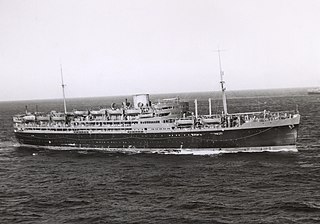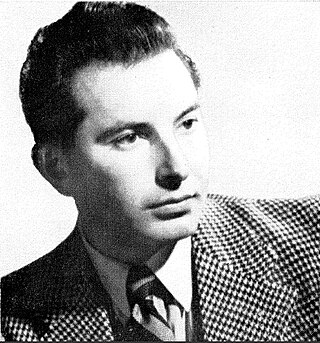
From 1942 to 1949, Canada forcibly relocated and incarcerated over 22,000 Japanese Canadians—comprising over 90% of the total Japanese Canadian population—from British Columbia in the name of "national security". The majority were Canadian citizens by birth and were targeted based on their ancestry. This decision followed the events of the Japanese Empire's war in the Pacific against the Western Allies, such as the invasion of Hong Kong, the attack on Pearl Harbor in Hawaii, and the Fall of Singapore which led to the Canadian declaration of war on Japan during World War II. Similar to the actions taken against Japanese Americans in neighbouring United States, this forced relocation subjected many Japanese Canadians to government-enforced curfews and interrogations, job and property losses, and forced repatriation to Japan.

Tatura is a town in the Goulburn Valley region of Victoria, Australia, and is situated within the City of Greater Shepparton local government area, 167 kilometres (104 mi) north of the state capital (Melbourne) and 18 kilometres (11 mi) west of the regional centre of Shepparton. At the 2021 census, Tatura had a population of 4,955.

SS Arandora Star, originally SS Arandora, was a British passenger ship of the Blue Star Line. She was built in 1927 as an ocean liner and refrigerated cargo ship, converted in 1929 into a cruise ship and requisitioned as a troopship in the Second World War. At the end of June 1940 she was assigned the task of deporting interned Anglo-Italian and Anglo-German civilians as well as a small number of legitimate prisoners of war to Canada. On 2 July 1940 she was sunk by a German U-boat off the coast of Ireland with a large loss of life, 805 people.
In customary international law, an enemy alien is any native, citizen, denizen or subject of any foreign nation or government with which a domestic nation or government is in conflict and who is liable to be apprehended, restrained, secured and removed. Usually, the countries are in a state of declared war.
German Australians are Australians with German ancestry. German Australians constitute one of the largest ancestry groups in Australia, and German is the fifth most identified European ancestry in Australia behind English, Irish, Scottish and Italian. German Australians are one of the largest groups within the global German diaspora.
Hans Kronberger CBE, FRS was a British physicist. During his career with the UK Atomic Energy Authority he made important contributions to the development of the British thermonuclear bomb and nuclear power engineering, especially in the field of isotope separation.

HMT Dunera was a British passenger ship which, in 1940, became involved in a controversial transportation of thousands of "enemy aliens" to Australia. The British India Steam Navigation Company had operated a previous Dunera (1891), which served as a troopship during the Second Boer War.

Internment of German resident aliens and German-American citizens occurred in the United States during the periods of World War I and World War II. During World War II, the legal basis for this detention was under Presidential Proclamation 2526, made by President Franklin Delano Roosevelt under the authority of the Alien Enemies Act.
Franz Ferdinand Leopold Stampfl MBE was one of the world's leading athletics coaches in the twentieth century. He pioneered a scientific system of Interval Training which became very popular with sprint and middle distance athletes. His most striking success was the world's first sub-four minute mile by Roger Bannister in 1954. Stampfl was posthumously awarded the World Athletics Heritage Plaque as a "legendary and pioneering coach" on 26 September 2019.

After Adolf Hitler came into power in 1933 and enacted policies that would culminate in the Holocaust, Jews began to escape German-occupied Europe and the United Kingdom was one of the destinations. Some came on transit visas, which meant that they stayed in Britain temporarily, while waiting to be accepted by another country. Others entered the country by having obtained employment or a guarantor, or via Kindertransport. There were about 70,000 Jewish refugees who were accepted into Britain by the start of World War II on 1 September 1939, and an additional 10,000 people who made it to Britain during the war.

The Camp de Rivesaltes, also known as Camp Joffre, was an internment and transit camp in the commune of Rivesaltes in the department of Pyrénées-Orientales of the French Southern Zone during World War Two. Between August 11 and October 20, 1942, 2,313 foreign Jews, including 209 children were transferred from Rivesaltes via the Drancy internment camp to the Nazi extermination camp Auschwitz, where they were murdered. Serge Klarsfeld described the camp as the Drancy of the Southern Zone.

Crystal City Internment Camp, located near Crystal City, Texas, was a place of confinement for people of Japanese, German, and Italian descent during World War II, and has been variously described as a detention facility or a concentration camp. The camp, which was originally designed to hold 3,500 people, opened in December 1943 and was officially closed on February 11, 1948.

The Hay Internment and POW camps at Hay, New South Wales, Australia were established during World War II as prisoner-of-war and internment centres, due in no small measure to the isolated location of the town. Three high-security camps were constructed in 1940. The first arrivals were over two thousand refugees from Nazi Germany and Austria, most of whom were Jewish; they had been interned in the United Kingdom when fears of an armed invasion of Britain were at their peak.

Campagna internment camp, located in Campagna, a town near Salerno in Southern Italy, was an internment camp for Jews and foreigners established by Benito Mussolini in 1940.

Erich Liffmann was a classically trained musician.
Italian prisoners of war in Australia were Italian soldiers captured by the British and Allied Forces in World War II and taken to Australia.
During World War II, 4,058 ethnic Germans along with several hundred other Axis-nationals living in Latin America were deported to the United States and their home countries, often at the behest of the US government. Although the arrest, internment and/or deportation of belligerent country nationals was common practice in both Axis and Allied countries during both World War I and World War II, subsequent US Congressional investigations and reparations during the 1980s and 1990s, especially for Japanese Americans interned, have raised awareness of the injustice of such practices. Unlike Allied civilians held in Nazi concentration camps or those interned by the Japanese, Axis nationals interned in Allied countries did not suffer from systematic starvation and widespread mistreatment by their captors.

The history of the Jews in the Isle of Man goes back to at least the early 19th century.

Eva Ruth de Jong-Duldig is an Austrian-born Australian and Dutch former tennis player, and current author. From the ages of two to four, she was detained by Australia in an isolated internment camp, as an enemy alien. She later competed in tennis, representing Australia at the Wimbledon Championships in 1961. She also played at Wimbledon in 1962 and 1963 for the Netherlands, and competed in the Australian Open, French Championships, Fed Cup, and in the Israel-based Maccabiah Games, sometimes called the Jewish Olympics, where she won two gold medals.













